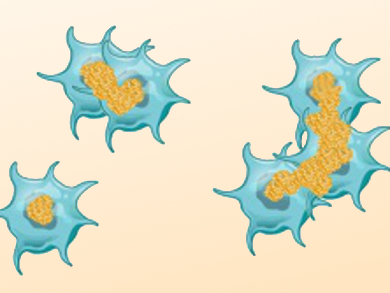Drug resistance and damage to healthy cells are both serious problems in cancer treatment. Many efforts have centered on using enzyme inhibition to induce cancer cell death, but challenges still remain.
Bing Xu and colleagues, Brandeis University, Waltham, MA, USA, have used chirality to control the reaction-diffusion (RD) of nanoparticles (NPs) for selectively inhibiting cancer cells. They used phosphorylated amino acids, either L-phosphotyrosine (L-pTyr) or D-phosphotyrosine (D-pTyr), to decorate commercially available nanoparticles.
Alkaline phosphatases (ALP), which are enzymes that are present in the cell culture, dephosphorylated the D-pTyr-decorated NPs much more slowly than the L-pTyr-decorated NPs. This rate difference causes the D-pTyr-decorated NPs to be mainly dephosphorylated on the cancer cells, while L-pTyr-decorated NPs were mainly dephosphorylated in the culture media. Without phosphate groups, the NPs are innocuous to cells.
The D-pTyr-decorated NPs adhered selectively to the cancer cells, resulting in poly(ADP-ribose)polymerase (PARP)-hyperactivation-mediated cell death. These results are the first example of chirality controlling RD process of NPs for inhibiting cancer cells. They illustrate a new route to develop anticancer nanomedicine.
- Chirality Controls Reaction-Diffusion of Nanoparticles for Inhibiting Cancer Cells ,
Xuewen Du, Jie Zhou, Jiaqing Wang, Rong Zhou, Bing Xu,
ChemNanoMat 2016.
DOI: 10.1002/cnma.201600258




